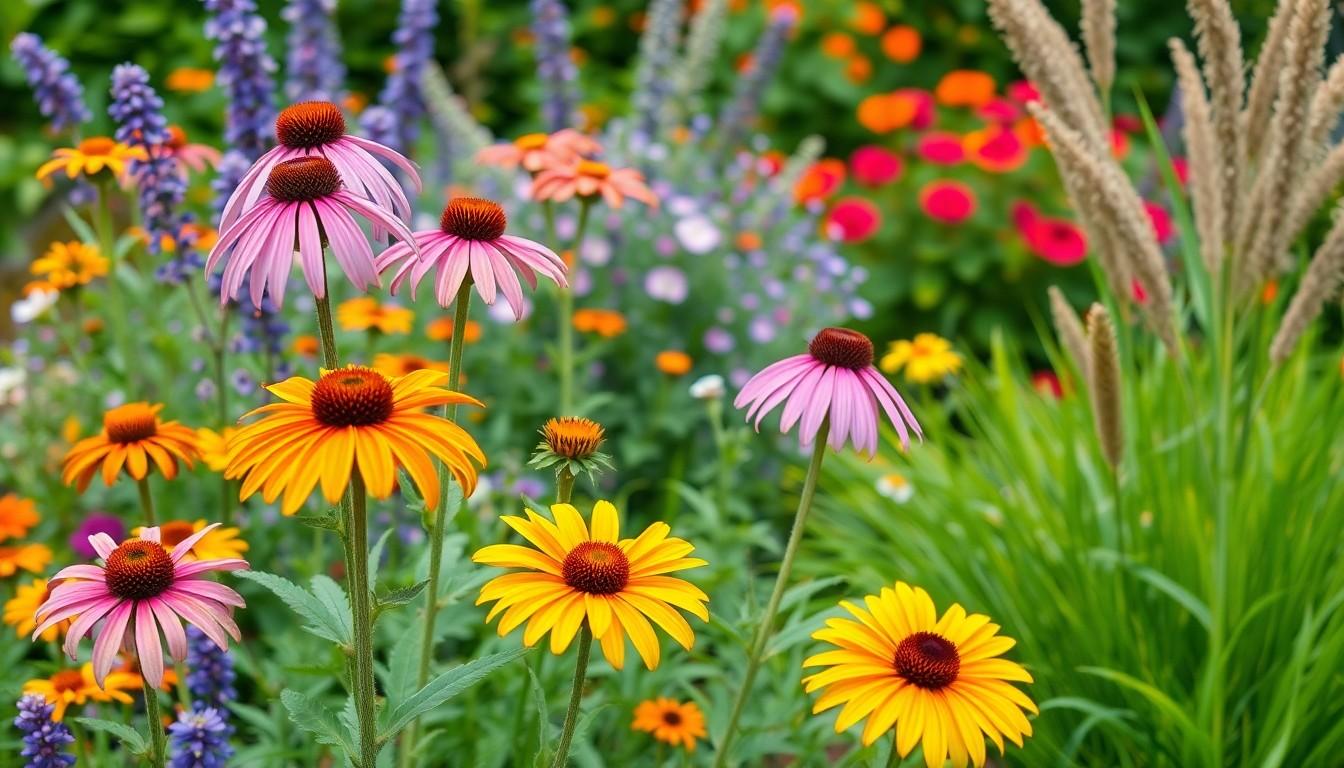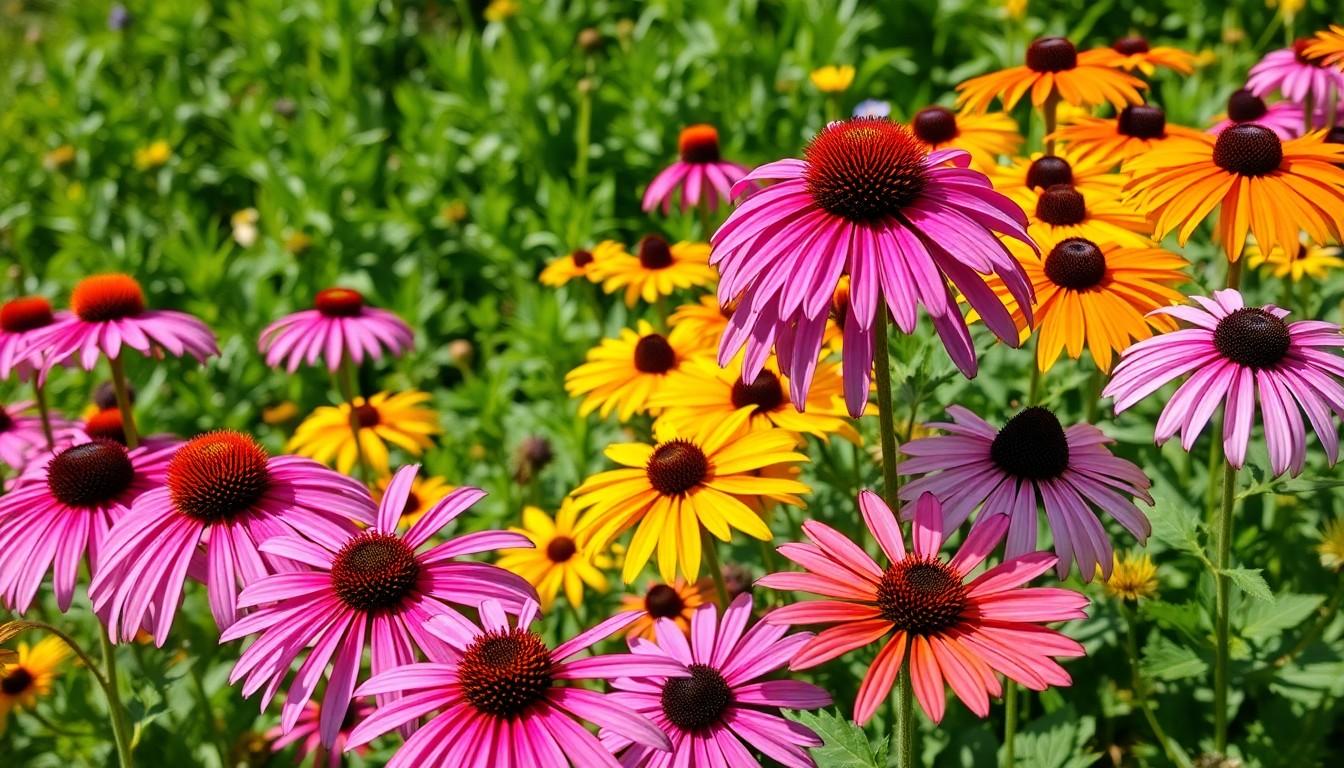When it comes to landscaping, native Indiana plants are like the superheroes of the garden world. They’re not just beautiful; they’re tough as nails and perfectly adapted to thrive in the local climate. Why settle for high-maintenance exotics that require more pampering than a Hollywood star when you can have resilient flora that practically takes care of itself?
Benefits Of Using Native Indiana Plants For Landscaping
Native Indiana plants offer various benefits for landscaping, particularly due to their resilience and adaptability. These plants thrive in local conditions, making them excellent choices for homeowners.
Environmental Advantages
Native plants enhance local ecosystems by providing essential habitats for wildlife. Pollinators like bees and butterflies rely on native species for food sources. These plants also require less water since they’re adapted to local rainfall patterns, reducing the need for irrigation. Additionally, native flora helps prevent soil erosion and improves soil health by promoting biodiversity. By utilizing native plants, landscapers contribute to maintaining Indiana’s environmental integrity while minimizing the introduction of invasive species that can disrupt local ecosystems.
Aesthetic Appeal
Native Indiana plants offer diverse colors, textures, and shapes that enhance landscape designs. Gardeners can select from a variety of seasonal blooms, ensuring vibrant displays throughout the year. The intricate designs of native plants create visual interest and attract wildlife. Choosing native species also fosters a sense of place, reflecting the unique beauty of Indiana’s natural landscapes. Homeowners appreciate how these plants blend seamlessly with local environments, cultivating a harmonious look that requires less maintenance compared to exotic varieties.
Popular Native Indiana Plants

Native Indiana plants enhance local landscapes with their resilience and adaptability. Below are several popular categories of these plants that thrive in Indiana’s climate.
Herbaceous Perennials
Key herbaceous perennials include Echinacea purpurea (Purple Coneflower) and Rudbeckia hirta (Black-eyed Susan). Both offer vibrant blooms that attract pollinators. Other notable species are Asclepias tuberosa (Butterfly Milkweed) and Aster novae-angliae (New England Aster), providing distinct colors and textures. These perennials thrive in various soil types and require minimal maintenance, contributing to a low-care garden.
Shrubs and Small Trees
Examples of shrubs include Cornus sericea (Red-Osier Dogwood) and Vaccinium corymbosum (Highbush Blueberry). Both support wildlife and offer aesthetic value with seasonal berries. Small trees like Amelanchier arborea (Serviceberry) and Cercis canadensis (Eastern Redbud) provide rich blooms and striking fall colors. These plants serve as excellent focal points and enhance biodiversity in landscaping.
Grasses
Native grasses such as Panicum virgatum (Switchgrass) and Schizachyrium scoparium (Little Bluestem) are vital for soil stabilization and wildlife habitat. Their unique textures and heights create visual interest in gardens. Additionally, Andropogon gerardii (Big Bluestem) contributes to native ecosystems. These grasses require minimal water, perfect for sustainable landscaping practices.
Choosing The Right Native Plants
Selecting appropriate native plants enhances landscaping and promotes environmental health. Factors like climate and soil types play significant roles in the decision-making process.
Climate Considerations
Indiana’s climate varies across regions, influencing plant growth. Native plants thrive in local conditions, withstanding temperature changes, seasonal variations, and precipitation patterns. Areas with hot summers benefit from drought-tolerant plants such as Echinacea purpurea, which can withstand dry spells. Cool, damp regions may favor more moisture-loving species like Carex pensylvanica. Assessing microclimates within a yard, such as shaded spots or sunny areas, helps gardeners choose plants that will flourish in those specific conditions.
Soil Types and Conditions
Soil quality significantly affects plant health and vigor. Different native plants have unique soil preferences, ranging from dry, sandy soils to rich, loamy types. For example, Rudbeckia hirta excels in well-drained soils while Cornus sericea prefers moist, fertile environments. Conducting a soil test provides insight into pH and nutrient levels, allowing gardeners to select compatible plants. Amending soil with organic matter can improve conditions for growth and increase the success rate of native plant integration.
Designing Your Landscape With Native Plants
Incorporating native Indiana plants into landscaping embraces local ecosystems while creating unique outdoor spaces. These plants thrive in Indiana’s environment, promoting sustainability and beauty.
Planting Strategies
When planting native species, it’s essential to consider their specific needs. Group similar plants together, as this mimics natural ecosystems. Stagger plant heights to create visual interest and depth. Implementing layers helps manage sunlight and moisture for each plant type. Scheduling planting in spring or fall optimizes growth and establishment. Within this timeframe, ensure soil preparation meets the requirements of selected plants. Cutting back invasive species enhances the success of native plant installations.
Complementary Planting Combinations
Choosing the right combinations can elevate the aesthetic and ecological value of landscapes. Pairing Echinacea purpurea with Rudbeckia hirta attracts diverse pollinators. Mixing grasses like Panicum virgatum with flowering perennials creates a dynamic habitat for wildlife while adding texture. Combining shrubs such as Cornus sericea with small trees encourages a layered canopy effect, providing seasonal interest. Aligning moisture preferences among plants improves overall health and minimizes competition. Establishing diverse plant layers fosters biodiversity and enhances the beauty of Indiana gardens.
Maintenance Tips For Native Indiana Plants
Native Indiana plants thrive with minimal maintenance, but specific care enhances their growth and resilience. Understanding watering and fertilization needs helps ensure optimal health.
Watering and Fertilization
Watering patterns depend on the plants’ natural habitats. Established native plants typically require less water than non-native species. During dry spells, deep watering once a week supports root systems. Rainwater collection can enhance sustainability and reduce utility costs. Fertilization requirements also differ; many native plants flourish in nutrient-poor soil. Testing soil can determine if fertilizers are necessary. When fertilization is needed, organic compost provides essential nutrients without harming local ecosystems.
Pest and Disease Management
Routine inspections highlight any pest infestations. Common pests include aphids and beetles, often manageable through natural remedies. Encouraging beneficial insects, such as ladybugs, provides additional pest control. Diseases like powdery mildew may affect certain plants, especially in humid conditions. Promoting air circulation through proper spacing and pruning minimizes disease risks. Organic fungicides can address serious fungal issues without harming surrounding flora. Recognizing potential threats early fosters a healthy garden environment.
Conclusion
Embracing native Indiana plants in landscaping not only enhances the beauty of gardens but also fosters a healthier environment. These resilient species thrive with minimal care while supporting local ecosystems and wildlife. By choosing the right plants based on specific site conditions gardeners can create vibrant landscapes that reflect Indiana’s natural heritage.
The practical tips and plant combinations discussed empower gardeners to design spaces that are both aesthetically pleasing and ecologically beneficial. As more people turn to native plants for their landscaping needs they contribute to a sustainable future that honors the unique flora of Indiana.

